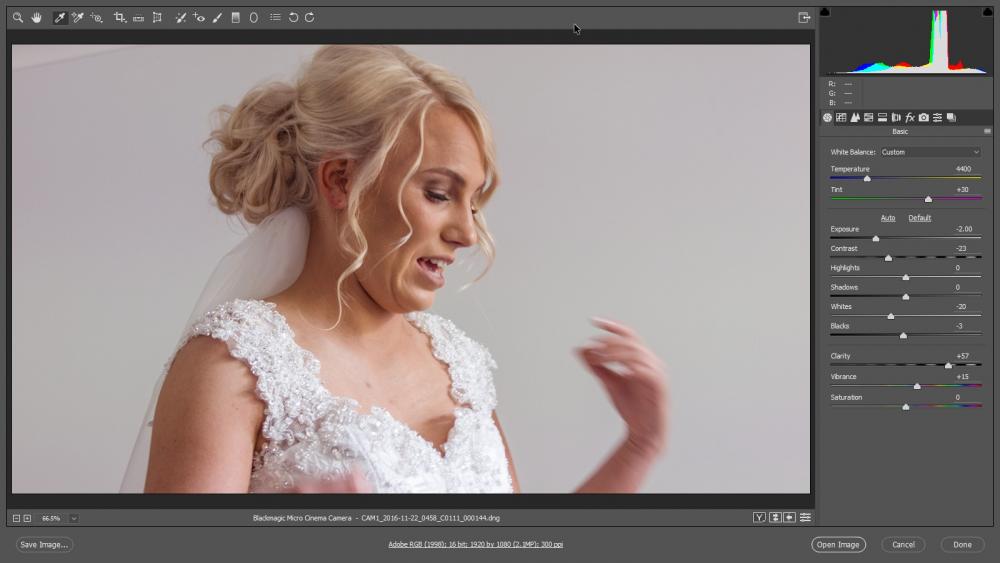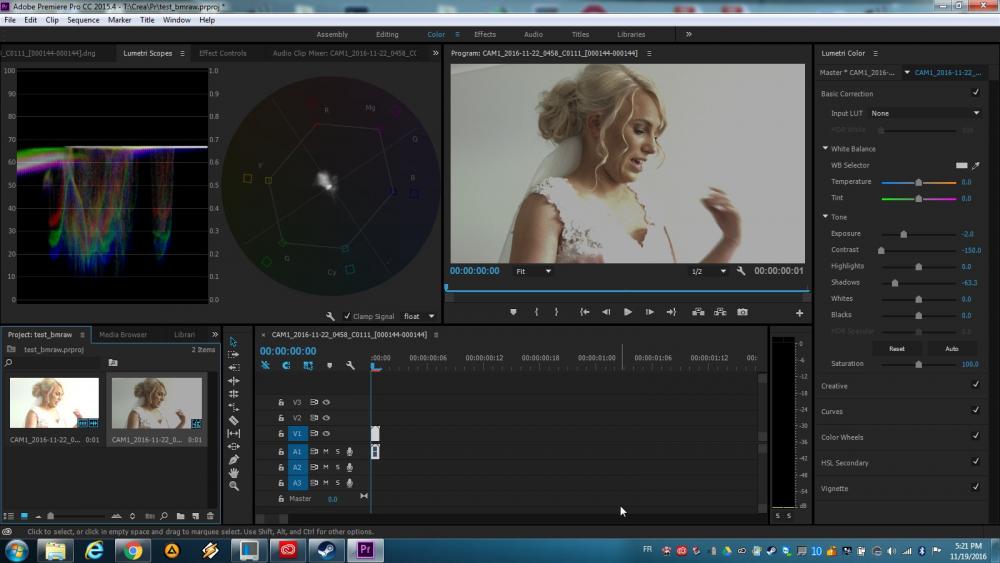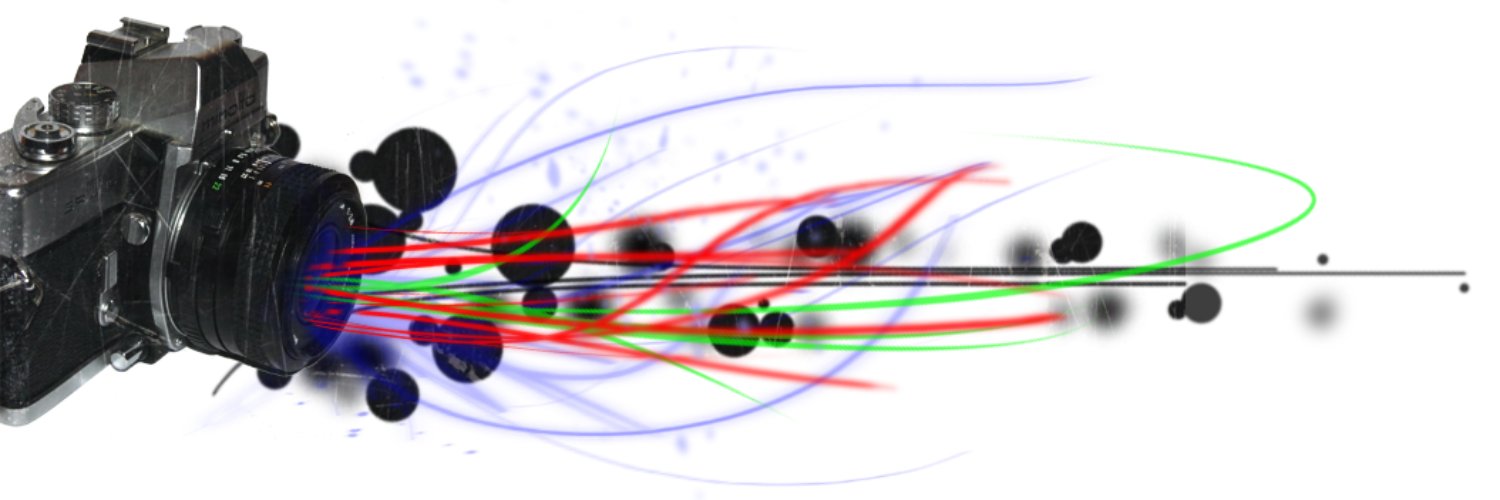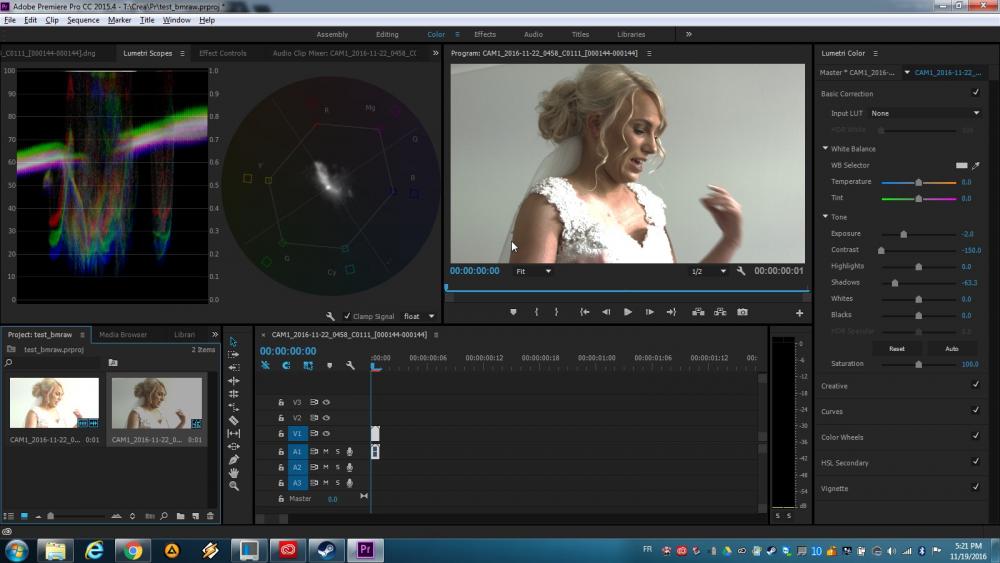-
Posts
485 -
Joined
-
Last visited
Content Type
Profiles
Forums
Articles
Posts posted by Justin Bacle
-
-
Just now, mercer said:
Metabones should make an MD to EF adapter with glass.
You just cant, MD flange distance is 43.5mm, which makes it 0.5mm smaller than Canon MD mount. You can push as hard as you want, you just can't fit a thing in -0.5mm :D
-
2 minutes ago, mercer said:
I've also read you can stack MD lenses to an ef speedbooster and get infinity focus if you buy one of those slim md to ef adapters. Apparently on ef camera you can only use them for macro photography but when used in conjunction with an ef speed booster, you can get infinity... don't know if it's true though.
Don't do that, trust me, I did not find any acceptable options for monting MD lenses on an EOS mount, and I've tried many things (slims adapters, adapters with optics)
Conversion should be an option, but the people making lens conversions are not interested in "lower" lenses than the mighty 50/1.2 & 85/1.2 :s
The "best" adapter is this one (http://www.ebay.com/itm/Thin-Minolta-MD-Lens-to-Canon-EOS-serial-Camera-Adapter-without-glasses-MD-EOS-/111751120312) but you are still missing around 1mm flange distance -> Infinity focus is not an option wide open
-
I am going to revive this topic, but this camera ticks many box. The only thing missing is 10 bit output IMO.
@Mattias Burling did you get a chance to shoot more since your first review ? Any updates on your review ?
I don't see many used LS300 for sale yet, but I don't know how many were sold.
-
-
In france we call that an After-movie but that is quite a bad way of defining an after-party movie IMO as it's not much of a movie, but more like a short report. (Or maybe I didn't get your exact question, as I am not a native english speaker myself)
-
According to this : http://www.digitalbolex.com/help-desk/backup/raw/ white balance can be set in post. (As you would expect with raw dng files)
-
Hi, how much are you asking for it ?
-
On 11/30/2016 at 1:51 AM, Laquaglia Punto Ernesto said:
A) .ari files and Magic Lantern 14bit .dng files
Just FYI, I read that ML raw files are actually recorder in 14bits but encapsulated in a 16bit dng file when processed, but that doesn't change them of course
 On 11/30/2016 at 1:51 AM, Laquaglia Punto Ernesto said:
On 11/30/2016 at 1:51 AM, Laquaglia Punto Ernesto said:The lumetri panel in premiere does not do that. It only apply a azure/orange filter to the image to simulate white balance shift.
The lumetri panel is not a good example, it is far from the best tool to process raw footage. Process your RAW footage (compressed or uncompressed) in ACR (via After Effects) and you'll be able to change WB accurately.
On 11/30/2016 at 1:51 AM, Laquaglia Punto Ernesto said:And the answers I have found so fare are:
C) Digital Bolex ?
-
17 hours ago, Don Kotlos said:
Apparently there are people that buy 8K cameras for vloging. The bar is now raised and I am not sure how you can make a romantic comedy with anything less than 8K. Crazy world. And by that I mean the mentally deranged people in it.
I hope they have people to post-process the footage as I don't imagine shooting raw for vlogging or any quick shoot-to-export projects. I'm very happy with H264 for this use !
-
I don't live that far away (Le Mans) and often go in Paris, so you may ask for your favour

-
3 hours ago, Dan Wake said:
saw this yesterday night, a very nice calculator for ML raw video!

Great, thank you for sharing

Last time I checked (17/11 nightly build) the 10 & 12 bit recording weren't working on the 50D but i'll try again as soon as there is another build.
-
12 hours ago, Hans Punk said:
I'm talking about the limitations of a non-cemented doublet (achromatic) diopter (vs the single element as with these vari-diopter designs) - the single element optics of these vari-diopters is a major cause of aberrations of image at wide apertures.
Having owned a FM and Core DNA, I can confirm that f4 is the stop where both focus solutions start to resolve the cleanest image on high contrast edges...especially when pushed on full frame. Sharpness 'performance' depends on your eyesight I guess.
BTW - Tito's FM that he did the test with used to be mine...so I know that lens particularly well

Great, thank you for these usefull pieces of information

-
13 hours ago, Damphousse said:
I would be lying if I said in low light I use aperture purely to control depth of field. Sometimes I am shooting at f/1.4 with a speedbooster because that's the only way I can get any kind of image on the sensor.
That is exactly true in my case too.
-
34 minutes ago, Hans Punk said:
It is all due the single element design of these diopters
I'm pretty sure that you need at least two elements to make a variable diopter
 (The FM and Rectilux can be sharp at wider apertures than f/4 btw -> have a look at @Tito Ferradans's test http://www.tferradans.com/blog/?p=9238 of the FM module)
(The FM and Rectilux can be sharp at wider apertures than f/4 btw -> have a look at @Tito Ferradans's test http://www.tferradans.com/blog/?p=9238 of the FM module)
-
1. full M @ 180° and NDs
(but if I don't have enough light, I might shoot at 270° for the half stop of light ! (I don't have low light friendly cameras)) -
You'll have to restric even more, as many many lenses fit your criterias :D
http://allphotolenses.com/lenses/c_342063/p_1.htmlI can recommend the M42 Fujinon 50/1.8 if you don't want any flares. You can go the obvious route of using an Helios-44 if you like flares. Anything in between should be good too (Super Takumars, Mamiyas, Yashikas, Zeiss', you name it !)
If you want reduced vertical "hazing", I guess a lens with a smaller front element and closer to the variable diopter of the FM is required, but I do not have experience with that) -
5 hours ago, keessie65 said:
- zoom lens with fixed lenght, appr. 35-80mm (as Pentax-A 35-70mm f4 SMC Zoom). Is that recommended, or not?
I would recommend this but be aware that many zooms from this era does have a rotating front element which are not usable with anamorphics (It seems to exist 2 different version of the pentax zoom, one with and one without the rotating front filter). Might sound obvious, but just in case you haven't thought of that. (I know I did not :o )
As for the fixed length, I don't mind my anamorphic sliding on the support, but it's a good idea to find a fixed lens one
(And I guess you'll vignette from 35 to 40mm, but I'm not sure)
-
Just did a stretch factor measurement as shown by @Tito Ferradans in his video about the Kowa B&H mods.
Isco Ultrastar @ infinity (measured with a +1 diopter) : 1.99x stretch -> 2.0x
Isco Ultrastar @ 1.5m (measured without diopters) : 1.82x stretch -> 1.8xWhat got me to measure it is Eddie (from Vid-Atlantic, from which I bought my new clamps), who is advertising the isco ultrastars on sale on vid-atlantic's website being advertised as 1.9x stretch anamorphic. I wanted to test that

I'm wondering if I should just unsqueeze everything @1.9x for simplicity or match the stretch factor for each shot (to this date, I always used the 2x stretch factor for ease of use with after effects)
-
Ooo nice to know, I never used procamp, as I do like the all in one interface of lumetri, but I'll check on my next project, thx

-
It is quite overexposed, but information is still here. You can process the footage in ACR through After Effects and import it back to Premiere (or dynamic link).

In premiere importing the dng directly, using lumetri, here is what I have using default sequence settings :

However, if you tick "Maximum Bit depth" on the sequence settings, you are now able to recover some of the highlights but still not as good as ACR.
I would then suggest to export your raw files using ACR (in After effects) to a "log" file, and then use it in premiere.
Any other ideas ?
-
13 hours ago, Bioskop.Inc said:
Exactly, x1.5 is more than adequate & 2.66:1 is far easier to deal with.
It's only really the purists (with their cheap x2 dual focus adaptors) that advocate a x2 anamorphic, and you can only use one with a camera with a 4:3 option.
That's true that 4:3 cameras are difficult to come across, but the final results are worth it I think. (plus 1.5x anamorphics are just too damn expensive IMHO). But the convenience of 1.5X is valuable for sure !
-
15 hours ago, funkyou86 said:
Great invention but I don't see the reason of using this heavy, bulky (double)focusing mechanism over a rangefinder or other optics.
I don't think the rangefinder fits on the NAP3-2M, being a very bulky projector anamorphic adapter.
Plus the NAP3 is super cheap (got mine for 40€ on ebay), so I cannot justify putting a $500 rangefinder in front of it. (But I'm still putting money aside to buy a Rangefinder/rectilux for my Isco).The best thing with the NAP3-2M is that it is super cheap and a fun lens. I had absolutely no second-thoughts about opening mine. Which I won't do with more expensive (refined) anamorphics. Great for this kind of experiments !
-
I was thinking about a solution like this using a couple of servomotors and an arduino. Give me a week to come with a solution on paper
 I'm sure it's not that difficult and way cheaper than the other solution
I'm sure it's not that difficult and way cheaper than the other solution
-
1 minute ago, ThomHaig said:
thanks for that help, guys.
That's cool that you can use all those mounts on the EF adapter. Would any of you have any recommendations for either a fast 35mm or 50mm that holds up wide open and can be used on the EF metabones XL?
I would have reccomended Minolta 50/1.2 or 50/1.4 or even the Canon 50/1.2 FD but these are not adaptable to the EF mount :s
The Takumar 50/1.4 is a cheap option, but quite hazy wide open. The Nikon 50/1.4 AI-s and Yashika 50/1.4 (M42) seems to be good options for mounting on EF mount





My review of the JVC LS300
In: Cameras
Posted
Are you using J-Log or cine gamma for your documentaries ?